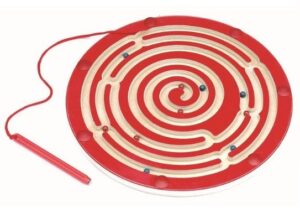The term “sealless pump’’ is used a lot in the transfer of fluids. The concept may be confusing if you are new to the industry. One can infer by the name that these are pumps that do not use traditional seal components, but what exactly does that entail, and what types of applications are ideal for a pump without traditional seals?
Let’s first review how mechanical centrifugal pumps operate. Mechanical centrifugal pumps have a motor-driven shaft that extends from the motor on the dry end of the pump, to the impeller on the wet end of the pump (the end that is intended to get wet). They utilize a mechanical seal where the shaft enters the wet end, preventing any leaking of the fluid from exiting the wet end casing. The spring-loaded mechanical seal component is built to stay in place around the rotating shaft and maintain fluid separation between system mechanisms.
Mechanical seals are still the preferred method for many applications, specifically applications that move water or other non-hazardous liquids. Pumping water from wells, light chemicals, aquarium filtering, aeration, water cooling, fuel injection, and cooling towers are all ideal applications for mechanical pumps. They are a more affordable option in comparison to sealless pumps and reduce power consumption compared to traditional “gland packing”, the earliest method of pump sealing that packs rope-like material around the shaft to prevent leakage from the wet end.
However, there is a downside to mechanical seals when it comes to hazardous materials. Mechanical seals are friction components that can wear and eventually fail when not properly maintained. In cases where the mechanical seal does fail, leaking fluid to the external environment will occur. This becomes a huge safety issue when dealing with hazardous materials. There are options for double or tandem mechanical seals, but they can significantly raise the price. This is where sealless pumps come into play.
A sealless pump allows for a fully enclosed wet-end of the pump, eliminating the need for any seal at all and eliminating the possibility of material leakage. Instead of a single shaft that runs from the motor all the way through to the impeller, the shaft is actually two separate pieces – one piece driven by the motor on the dry end, and the other piece driving the impeller in the fully enclosed wet end. You might be wondering how the impeller shaft gets rotated when it is not physically attached to the motor, and the answer is magnets.
Before the age of ipads and smart phones, you might remember a childhood toy called a magnetic maze. The object of the game was to get a metal ball through a maze without touching it. To accomplish this, the player used a magnetic pen on the opposite side of the surface to attract the metal ball and guide it through the obstacles. This is the basic concept that applies to sealless pumps and allows the impeller shaft to be rotated within an enclosure.

The impeller shaft on a sealless pump is enclosed in the wet end housing and fitted with a magnetic sleeve. There is another magnetic sleeve on the motor shaft within the dry end of the pump that fits around the wet end sleeve. The two sleeves are separated by the housing, but the magnetic force between them is so strong that as the larger sleeve turns by the motor shaft, it also turns the smaller sleeve within the wet end, effectively rotating the wet end shaft and impeller within a closed space (This is why sealless pumps are also commonly referred to as “magnetic drive” pumps).
If you are still having trouble visualizing the concept, this video provides a good illustration of the internal components of sealless pumps: Magnetic Drive Sealless Pumps – YouTube
As mentioned, sealless pumps are ideal for applications dealing with hazardous material, including acids, alcohol & glycols, alkalis, halogenides, heat transfer fluids, hydrocarbons, nitrogen & sulfer compounds, salts and other chemicals. When dealing with these materials it is imperative to prevent leakage and justifies the higher cost for “sealless” or “mag drive” pumps.
